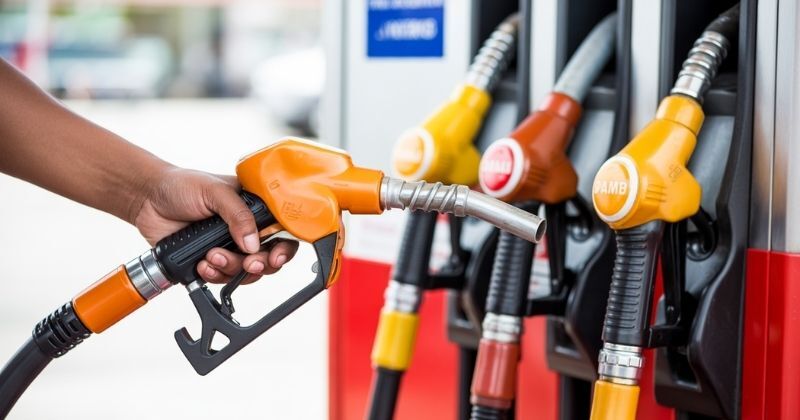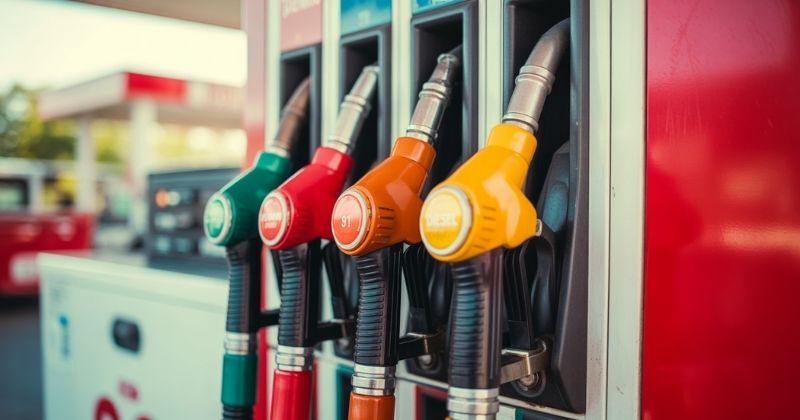
At the start of September, petrol price recoveries have slipped into the negative, placing motorists in a disadvantageous position as they look ahead to the anticipated adjustments expected in October. The early signs suggest that drivers could face added pressure if conditions do not improve in the coming weeks.
Key Takeaways
- Petrol under pressure while diesel offers relief: Petrol is showing an under-recovery of up to 26 cents per litre, signalling likely increases, while diesel is enjoying an over-recovery of around 22 cents per litre, providing potential price cuts for industries and households that rely on it.
- Global oil and the rand remain decisive factors: Oil prices are trending slightly higher than in August, while the rand has stayed mostly within the R17.50 to R17.70 range. Together, these forces will determine whether South Africans face higher costs or some relief in October.
- Uncertainty remains high as political and economic risks weigh in: Forecasts for oil suggest potential declines, but political disagreements in South Africa and market volatility around the US dollar could quickly erase gains, leaving motorists exposed to sudden increases.
About Arcadia Finance
Arcadia Finance makes borrowing simple. Apply at no cost and compare offers from 19 NCR-compliant lenders. With a fast process and reliable choices, you can secure the right loan tailored to your financial situation.
For many households already grappling with the high cost of living, the prospect of another increase in fuel expenses could place additional strain on transport budgets and push up the price of basic goods reliant on fuel-intensive supply chains.
Early Data from the Central Energy Fund
Fresh figures released by the Central Energy Fund (CEF) for the opening days of the month highlight a sizeable under-recovery in the petrol price calculations. By contrast, diesel recoveries are showing healthier levels, reflecting a stronger performance compared to petrol. This divergence between the two fuels sets the stage for a potentially uneven outcome when prices are formally reviewed. The early CEF data is closely watched by analysts and the transport sector alike, as it often serves as the first indication of whether motorists will need to brace for increases or can expect relief at the pumps.
Petrol is currently registering an under-recovery ranging between 19 and 26 cents per litre, a situation that signals a negative outlook for consumers. Diesel, on the other hand, is reflecting an over-recovery of approximately 22 cents per litre, which demonstrates that the product is continuing along its path of normalisation. These figures highlight a split between the two fuel types, where motorists using petrol could face increases while those reliant on diesel might enjoy relief. The contrast is particularly significant for industries such as logistics, agriculture, and mining, which rely heavily on diesel and could benefit from the improved recovery levels, while ordinary commuters face the opposite fate with petrol.

Impact of International Oil Prices
The weaker position for petrol is largely a result of international product price movements, which remain heavily influenced by global oil trends. Oil has been trading just below 67 dollars a barrel and is showing a slight upward shift compared to August, when it hovered around or below 66 dollars a barrel. Even a marginal rise in Brent crude values can significantly affect local recovery figures, particularly when combined with other external factors.
If crude oil continues edging upwards, it could erase any small gains made from exchange rate support, leading to a harsher outcome for October.
Rand and Dollar Exchange Rate Effect
The second key element shaping the recovery calculations is the rand to dollar exchange rate, which has been providing a small but meaningful boost. At present, the currency dynamic is contributing an additional 3 cents per litre towards an over-recovery, offering some relief that partly offsets the negative impact of oil prices. While this contribution is welcome, it is not sufficient to counterbalance the pressure from oil prices, making the exchange rate an important but limited cushion.
Current Projections for September
The provisional outlook at the start of September is reflected in the following projections:
| Fuel Type | Projected Change | Direction |
|---|---|---|
| Petrol 93 | +19c per litre | Increase |
| Petrol 95 | +26c per litre | Increase |
| Diesel 0.05% (wholesale) | -22c per litre | Decrease |
| Diesel 0.005% (wholesale) | -22c per litre | Decrease |
| Illuminating paraffin | -14c per litre | Decrease |
These numbers suggest a mixed bag for consumers, where urban commuters dependent on petrol-powered vehicles will likely be worse off, while rural households that depend on paraffin and industries using diesel may find some relief.

Uncertainty About October Changes
Although these numbers give an early snapshot of the situation, it is far too soon to predict with confidence how fuel prices will be adjusted in October. The first few days of the month typically serve as an indication of the forces at play, rather than a final outcome. The direction of oil prices and the performance of the rand in the coming weeks will be decisive in determining whether consumers face increases or reductions.
Given the volatility of both global oil markets and emerging market currencies, the next three weeks could either soften the blow or exacerbate the pressure, depending on how events unfold.
Oil Market Forecasts
Global oil prices are currently offering a mixed picture. Analysis from Bloomberg suggests there are clear signals that crude could move lower over the next few weeks or months, largely because supply is expected to increase while demand remains under strain. This week alone, oil is heading for a weekly decline in anticipation of an OPEC+ meeting that could approve a further rise in production.
The alliance of producers is set to meet virtually on 7 September to decide the next step, having already restarted 2.5 million barrels per day of supply at its previous session. Analysts warn that the oil market is likely to remain volatile, with Brent crude already down by 11% since the start of the year, driven by oversupply concerns and weaker demand caused by trade tensions with the United States. This instability creates uncertainty for South African policymakers and fuel regulators, as sudden dips or spikes in global oil prices can swiftly undo domestic forecasts.
Rand Remains a Key Variable
While weaker oil prices could support cuts in October, the rand represents a more unpredictable element. The local currency lost ground against the dollar earlier in the week after disappointing employment data was released in the United States. By Friday, however, the rand regained its position, trading back to R17.70 to the dollar, assisted by Reserve Bank data showing an increase in South Africa’s foreign reserves during the previous month.
Despite periods of resilience over recent months, especially in the context of global trade disputes and heavy tariffs of up to 30% on South African exports to the United States, the rand remains highly sensitive to external shocks. Its movements often mirror fluctuations in the dollar, making it a volatile contributor to local fuel price calculations. For motorists, this means that even small changes in international financial conditions can quickly filter through to their monthly fuel bill, leaving little room for stability.
Political Sentiment and Market Reactions
The rand’s performance has also been affected by political sentiment within the country. Reuters noted that a recent Ipsos survey reflected declining optimism among South Africans regarding the state of the economy and politics, particularly concerning the functioning of the Government of National Unity. Since its establishment in 2024, the GNU had generated optimism, but recent disagreements within the coalition appear to have dampened public confidence.
For the past month, the rand has remained largely confined within the R17.50 to R17.70 per dollar range. While this relative stability has supported recoveries, the risk remains that any sudden market shock could send the currency towards R18 per dollar or worse, which would immediately translate into higher fuel costs for motorists. The delicate balance between political stability and market trust is proving decisive, with any fresh turmoil likely to weaken the rand further and intensify price pressures.

Outlook for the Rest of the Month
With more than three weeks left in September, there is still ample time for the picture to change substantially. The interplay between oil prices and the rand will remain the critical factors, and any significant swings in either direction could alter the outlook for October’s fuel adjustments. For now, South African motorists remain caught between mixed signals, hoping for stability but aware that volatility in global and local markets could easily shift the outcome. Industry insiders warn that the unpredictability of both oil supply negotiations and political sentiment at home make it a particularly challenging environment for accurate forecasting, leaving households and businesses in a state of uncertainty as they prepare for October.
Conclusion
The start of September has opened with warning signs for petrol prices, leaving motorists concerned about the possibility of hikes in October, while diesel users may benefit from temporary relief. The balance between rising oil prices and a volatile rand will be the deciding factor, and with international supply negotiations and domestic politics both influencing the outcome, the picture remains highly uncertain. South African households and businesses must therefore prepare for further turbulence in fuel costs, knowing that the next three weeks will be pivotal in shaping what they ultimately pay at the pumps.
Fast, uncomplicated, and trustworthy loan comparisons
At Arcadia Finance, you can compare loan offers from multiple lenders with no obligation and free of charge. Get a clear overview of your options and choose the best deal for you.
Fill out our form today to easily compare interest rates from 19 banks and find the right loan for you.


